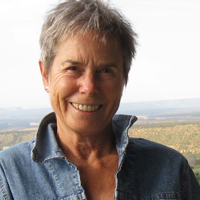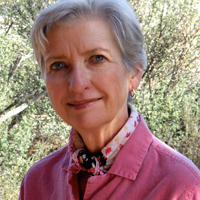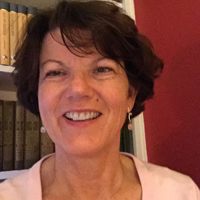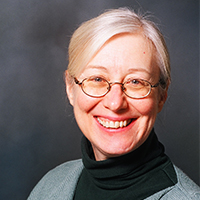Named Professors

Hale Professor: Lenore Grenoble, University of Chicago
One of the great challenges for linguists is to study a language on its own terms, to avoid biases in our analyses, biases that may be introduced by our native language(s), languages we have studied, or our by our theoretical apparatus. At the same time, the unexpected phenomena may be important for shaping our understanding of language, linguistic diversity and cross-linguistic similarity.
In this talk I discuss some strategies for mitigating some of these potential biases, and for documenting and analyzing a language on its own terms. I argue for an engaged model of fieldwork that involves, indeed requires, the active participation of language users, thoughtful attention of the linguist, and a broader view of what language is. This is a problem that Ken Hale also grappled with, and I draw on concrete examples from his own work (Hale 1992, 1998) and my own. As an illustrative case, Hale presents Damin, an auxiliary language used by Lardil men on Mornington Island in North Queen. Unlike Lardil, the Damin sound inventory (surprisingly) includes clicks. The use of an auxiliary system, with an auxiliary sound system, is unexpected and could be easily missed.
My own fieldwork finds some parallels, in particular in recent work with a team of researchers working in Cameroon, Senegal, Scandinavia and Greenland, documenting the use of clicks and other sounds that stand outside a language’s phonemic inventory but are regular parts of the communicative system. They are conventionalized and recognizable in isolation by the speakers, serving a number of discourse and pragmatic functions and are a core part of language. Examples in American English include mm-mm [ʔmʔm] ‘no’ and uh-oh [ʌʔoʊ], both of which use a glottal stop, not a phoneme in English Although they are readily recognized by speakers as having semantic meaning, such items (what I call verbal gestures) are distinguished from a language’s lexical words in that they do not take a morphosyntactic frame and thus do not combine with the grammar.
Filmore Professor, Julia Hirschberg, Columbia University
In conversation, speakers often adapt aspects of their speaking style to the style of their conversational partner. This phenomenon goes by many names, including entrainment, adaptation, and alignment. In this talk, I will describe results from experiments on English and Mandarin prosodic entrainment in the Columbia Games Corpus and in the Tongji Games Corpus, large corpora of speech recorded from subjects playing a series of computer games. I also will discuss experiments relating entrainment to several social dimensions, including likeability and dominance, and its relationship to higher level prosodic features. Finally, I will describe experiment with systems that entrain to their users in a set of “Go-Fish” games created in English, Porteño Spanish, and Slovak, as well as other ongoing research studying entrainment in deceptive speech and in linguistic code-switching. This is joint work with Štefan Beňuš, Nishmar Cestero, Agustín Gravano, Rivka Levitan, Sarah Ita Levitan, and Zhihua Xia.
Sapir Professor: Penelope Eckert, Stanford University
Current work on the meaning of sociolinguistic variation encourages us to examine how variation relates to the larger meaning system of language. Variation is a heterogeneous social-indexical system, but what is distinctive about variation is not so much the meanings it conveys, as the way in which it conveys them. The semantic system is primarily referential, while variation is purely indexical, and in between is a range of resources that balance reference and indexicality. A growing interest among semanticists in social/expressive meaning (e.g. Potts (2007); Acton 2014; Beltrama 2016; Burnett 2016; Jeong 2016) opens the door to integrating pragmatics and variation in a wider expressive system.
Sociolinguistic variation constitutes the most performative component of the broader system of expressivity in language. Tying variation to this broader system, I will examine the range of variables from morphosyntax to voice quality, providing evidence from a wide range of studies that different kinds of variables provide material for different kinds of meanings. I propose a continuum of interiority – a range of indexicality from public and enduring facts (e.g. class, ethnicity) to states associated with an “interior self” (e.g. affect).
Collitz Professor: Joan Bybee, University of New Mexico
The question of whether grammatical or lexical factors can condition or block sound change has been discussed from many perspectives for more than a century without resolution. Here we consider studies of sound change in progress which show that words or phrases that are used frequently in the phonetic environment for change undergo the change before those whose use is less frequent in these contexts. Because words of different categories and with different structures also have different distributions, they may occur preferentially in certain phonetic environments. Thus apparent interference by grammatical and lexical factors can be explained by phonetic factors if we expand our notion of ‘phonetic environment’ to include frequency within the environment for change, which includes the segmental environment as well as factors that affect the degree of prominence a word receives in context.









